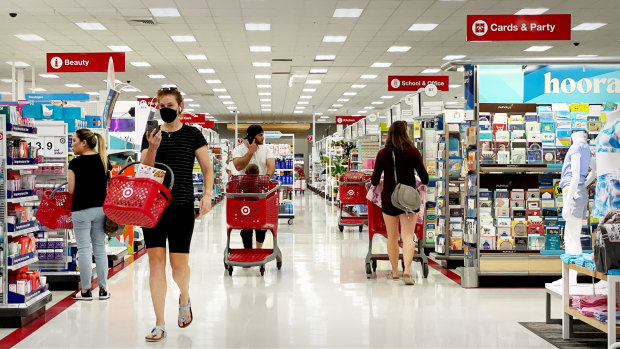
Target Corporation (TGT) -) is pulling out the stops for back-to-school season.
The retailer is offering one-time 20% discounts to teachers and college students enrolled in its Target Circle loyalty program. Target is also pushing brands like kids' clothing from Cat & Jack, bedroom and dorm décor from Pillowfort and Room Essentials, and school supplies from Mondo Llama.
Back to school is, of course, a crucial event for retailers every year. But this season offers more high stakes for Target.
Inflation-wary consumers have been cutting spending on categories essential to its success, including apparel and home goods. As a result, the retailer barely squeezed out sales again in the first quarter. And the second quarter will probably not be great either.
In addition, Target’s decision to pull LGBQT+ Pride merchandise from its shelves because of right wing objections was highly controversial. Some consumers who form the retailer’s more progressive base have vowed to no longer shop there.
So Target really needs a strong back-to-school season to recover some momentum if the retailer is to hit its already modest annual sales forecast of a small decline in comparable sales to a small increase in such sales.
“Our expectation is that some of the strengths of Target really amplify during the back half of the year,” chief growth officer Christina Hennington told analysts. “And it starts with back to school, back to college, where the full value proposition of Target is really put on display.”
Walmart Is Crushing It
But here’s the problem: standing in Target’s way is a 800 pound gorilla named Walmart Stores Inc. (WMT) -)
To put it simply, Walmart has been crushing it this year. The retailer’s reputation for low prices and focus on groceries and everyday household essentials have really struck a chord with consumers worried about rising prices.
In the first quarter, Walmart said U.S. comparable sales jumped 7.4% while e-commerce sales increased 27%. Target, by contrast, said comparable sales grew just 0.7% and e-commerce sales actually fell 3.4%.
Walmart’s run of success will likely extend into the back-to-school (BTS), according to a new consumer survey by Coresight Research.
“Walmart is set to dominate the BTS season, with its share of shoppers remaining largely steady compared to last year even as Amazon and Target saw notable declines,” the report said.
“In recent weeks, Walmart and dollar stores have seen their fortunes rise. Our survey indicates that these trends are likely to continue into the back-to-school season.”
The survey showed that 60.2% of consumers said they planned to shop at Walmart, far ahead of Amazon Inc. (AMZN) -) (48.8%) and Target (39%).
What should especially worry Target is that the nearly 40% figure is significantly down from last year when 52.8% of consumers said they would shop at the retailer for back-to-school merchandise.
In reality, Target’s goals for back-to-school has never been to beat Walmart in overall sales, probably because the retailer knows it can’t.
More Modest Goals
For one thing, Walmart and Target serve different consumers. Target is unique in that the company is a mass discounter that appeals to higher income shoppers.
Yet Walmart holds a decisive edge when it comes to lower income shoppers. The Coresight survey shows that 72% of consumers who earn less than $50,000 a year plan to shop at Walmart for back-to-school compared to just 34.3% for Target.
So while Target’s higher income consumers might buy more higher priced items, they are too small of a group to offset Walmart’s enormous advantage with lower income Americans and relative strength with all income groups.
Target knows this. That’s why the retailer seems content to generate healthy profit margins while gaining market share in key categories where it usually excels.
“We can leverage five categories in our multicategory portfolio to achieve what you need for your family, such as buying backpacks and lunches and new outfits for school,” Hennington said.
“We do believe that there's some market share upside in key categories, especially in home where we believe back to college will benefit strongly from market disruptions in categories like domestics and kitchen appliances,” she said. “So, we're betting on… the newness and the agility and having the right fresh assortment and continuing to lead into the affordable side will give us momentum in the back half.”
Consumers Prefer Physical Stores
The report also offered good news for both Walmart and Target. Consumers said they will spend an average of $279 per child on back-to-school shopping inside physical stores, a 20.8% gain from last year.
By contrast, shoppers said they will spend an average of $339 online only, a slight decline from 2022.
Despite the growth of online sales over the past decade, especially during the pandemic, stores remain central to Target’s strategy and gives it the best opportunity to do what it does best: emotionally connect with consumers.
“While Walmart looks to be the winner in back-to-school shopping, our weekly consumer survey suggests that Amazon and Target are performing well at the moment and should not be counted out of seeing strong spend this season,” the report said.







